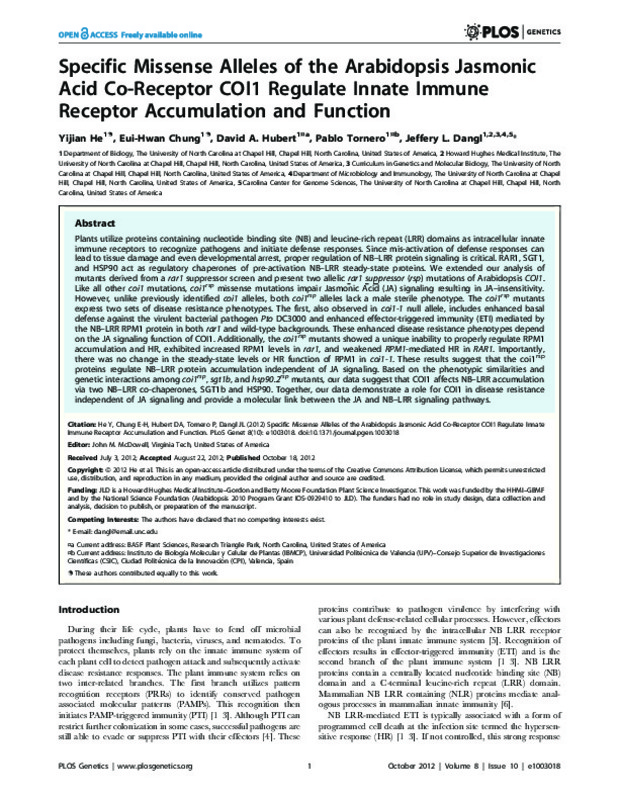JavaScript is disabled for your browser. Some features of this site may not work without it.
Buscar en RiuNet
Listar
Mi cuenta
Estadísticas
Ayuda RiuNet
Admin. UPV
Specific Missense Alleles of the Arabidopsis Jasmonic Acid Co-Receptor COI1 Regulate Innate Immune Receptor Accumulation and Function
Mostrar el registro completo del ítem
He, Y.; Chung, E.; Hubert, D.; Tornero Feliciano, P.; Dangl, J. (2012). Specific Missense Alleles of the Arabidopsis Jasmonic Acid Co-Receptor COI1 Regulate Innate Immune Receptor Accumulation and Function. PLoS Genetics. 8:1003018-1003018. doi:10.1371/journal.pgen.1003018
Por favor, use este identificador para citar o enlazar este ítem: http://hdl.handle.net/10251/38838
Ficheros en el ítem
Metadatos del ítem
| Título: | Specific Missense Alleles of the Arabidopsis Jasmonic Acid Co-Receptor COI1 Regulate Innate Immune Receptor Accumulation and Function | |
| Autor: | He, Yijian Chung, Eui-Hwan HUBERT, D.A DANGL, J.L | |
| Entidad UPV: |
|
|
| Fecha difusión: |
|
|
| Resumen: |
[EN] Plants utilize proteins containing nucleotide binding site (NB) and leucine-rich repeat (LRR) domains as intracellular innate immune receptors to recognize pathogens and initiate defense responses. Since mis-activation ...[+]
|
|
| Palabras clave: |
|
|
| Derechos de uso: | Reconocimiento (by) | |
| Fuente: |
|
|
| DOI: |
|
|
| Editorial: |
|
|
| Versión del editor: | http://dx.doi.org/10.1371/journal.pgen.1003018 | |
| Código del Proyecto: |
|
|
| Agradecimientos: |
JLD is a Howard Hughes Medical Institute-Gordon and Betty Moore Foundation Plant Science Investigator. This work was funded by the HHMI-GBMF and by the National Science Foundation (Arabidopsis 2010 Program Grant IOS-0929410 ...[+]
|
|
| Tipo: |
|









